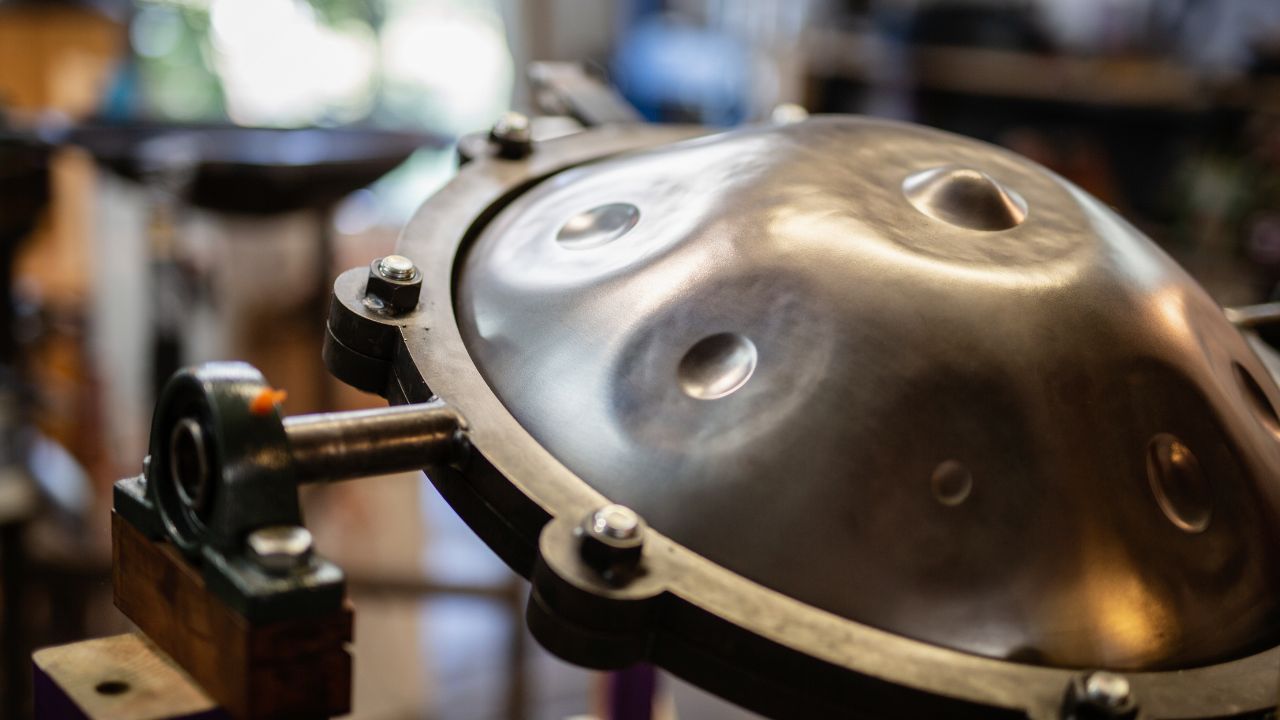The handpan is a magical musical instrument that is famous for its relaxing and calming melodies. To those who want to own one, it is imperative to know how the quality of the handpan is determined because it is an investment.
Here are essential tips to help you determine the quality of a handpan pan drum before making a purchase.
Key Tips To Access The Quality Of A Handpan
Material and Construction
The quality of the material used to build a handpan serves as the core determinant of its quality. All premium handpans are either made of nitrided steel or stainless steel in order to reduce vulnerability to rust and maximize the quality of the instrument.
- Visual Inspection: Inspect the surface of the handpan for any irregularities resulting from the hammering process or any signs of rust. The overall surface should be glossy and polished, and the distribution of the tone fields should be neat, with an equal space between them.
- Shell Integrity: The shells should be well joined with no gaps. A seamless construction generally indicates better durability and sound isolation between the notes.
Sound Quality
Sound is the most crucial aspect when assessing a handpan.
- Tone Clarity: Strike each note and listen for a clear, pure tone without any buzzing or rattling sounds, which can indicate loose or poorly attached tone fields.
- Sustain and Resonance: Good quality handpans have a long sustain, meaning the note will resonate and hold its tone for several seconds without dampening too quickly. The resonance should feel full and rich.
- Harmonics: Check the harmonics by listening to the overtone series each note produces. In a high-quality handpan, the harmonics should align well with the fundamental note and enhance the overall sound without clashing.
Tuning Consistency
The tuning of a handpan is critical to its playability and musicality. Each note should be tuned to specific frequencies that correspond to a musical scale.
- Scale Integrity: Play the handpan in the sequence of its scale to ensure that the notes progress smoothly in tone. Any dissonant notes or odd intervals may indicate poor tuning.
- Cross-talk: Play one note and listen to whether it causes other unintended notes to ring, known as cross-talk. Minimal cross-talk is preferable as it indicates a well-tuned instrument where each note can resonate independently.
Aesthetic Appeal
While aesthetics do not affect the sound, the visual appeal of a handpan can be a consideration, especially for performers or those who value the artistry of their instruments.
- Finish: Some handpans come with different finishes, such as a raw steel look or a coated finish. The choice is subjective, but check for consistency and craftsmanship quality in the finish.
Brand Reputation and Reviews
Research the manufacturer’s reputation within the handpan community. Established brands with positive reviews are generally more reliable for consistent quality. One can also glean about the longevity and satisfaction levels linked to the brand’s instruments by going through the reviews and testimonials posted online.
- Community Feedback: Exploring the handpan forums online or meeting other handpan enthusiasts or professionals can also help you learn about the best handpan makers and what to expect from the instrument.
Conclusion
Selecting the right-hand pan can involve reviewing its construction material, construction, sound, a tuning system, and, most importantly, manufacturer. By keeping these guidelines in mind, one can make the right purchase and acquire a lovely handpan that will bring joy for as long as possible.


